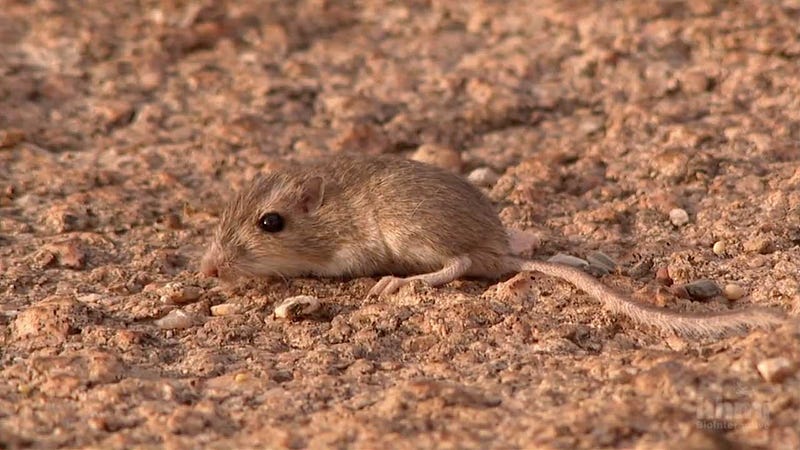While many high school science programs teach to the test, placing their focus on preparation for standardized exams, we propose a multi-disciplinary approach to education with a list of films to accompany biology curricula.
These videos have been selected with key lessons in mind, addressing topics such as evolution, biodiversity, molecular growth and reproduction, dynamic homeostasis, information retrieval, transmission and response in living systems, and biological system interaction.
With films ranging from lab footage to experimental and documentary shorts, the package offers a range of entry-points for young learners to engage with the study of biology and develop critical thinking skills.
This week, we look at evolution and biodiversity.

Watch Beetle Bluffs on Labocine
This short “brings to life the stories that accompany each specimen within a natural history collection. The film is by Anna Lindemann, developed in collaboration with Brian Farrell, Curator of Entomology at the Harvard Museum of Comparative Zoology, home to one of the richest and historically most significant insect collections in North America. “Beetle Bluffs” is inspired by a pioneering 1938 paper on beetle mimicry by Philip Darlington, a former curator of the museum. Using artifacts from Darlington’s research and the insect specimens cited in the original paper, “Beetle Bluffs” not only captures the beauty of biodiversity, but also illuminates predator-prey dynamics and dramatizes the evolution of mimicry.”

Watch MEPE on Labocine
Part-mystery, part science, detective Dick Mipy investigates the killings of unusual animals. At the heart of the mystery are “the evolutionary patterns of MEPE in mammals and when and how its functional regions were acquired during evolution.”

Watch Primate Cinema: Apes as Family on Labocine
“Primate Cinema: Apes as Family is a drama made expressly for chimpanzees — and the chimps’ reaction to its screening at the Edinburgh Zoo. Chimpanzees watch television as a form of enrichment in captivity. But no filmmaker had made a film for a specifically ape audience. Commissioned by Arts Catalyst, and supported with an art-science grant from the Wellcome Trust, the director, in consultation with primatologists, researched chimpanzees’ reactions to a variety of television genres — Teletubbies, wildlife films, human actors playing chimp behavior, kettle drums, chimpanzee display behavior. Chimps seem to like to watch the same things as human primates — dramas around food, territory, social status, and sex. In Apes as Family, the protagonist is a young female chimp, played by a human in an animatronic costume, whose facial expressions are controlled by puppeteers. The young female, like Dorothy in the Wizard of Oz, encounters strange males on an adventure, which eventually leads back “home.”
The drama is intercut with the chimps’ responses to the film, when it premiered at the zoo. Chimps’ were attentive to the film; some sat and watched, others attempted to touch or smell the characters, and other appeared to mimic the action on screen.
The project was intended to create a prism for human beings to think about the inner world of chimpanzees. By watching a movie through chimps’ eyes, we can imagine what they think and feel. Chimps are, after all, our closest relatives. Known for their complex social, cognitive and emotional lives, they also share with us a fascination with cinema.”

Watch Scientists Under the Microscope on Labocine
Director Anne Milne engages with scientists themselves, allowing them to give personal insight into human evolution, social interactions, and the unity of all living things.

Watch Optogenetics — Light Gets on Your Nerves on Labocine
Thanks to optogenetics, “nerve cells, which can be switched on and off with light.” Director Oliver Päßler delves into this field as he follows opto-physicist, Ernst Bamberg, at the Max Planck Institute of Biophysics in Frankfurt. Bamberg “is working on improving this technology further to ensure that neuroscientists can learn more about our brain.”

Watch Daughter of Genetics on Labocine
“Betsey Bridges Black, the daughter of Calvin Bridges, one of the fathers of genetics that worked in The Fly Room in the Morgan talks about her father, genetics and what she inherited.”

Watch The Making of the Fittest: Natural Selection and Adaptation on Labocine
“Not only is evolution happening right now everywhere around us, but adaptive changes can occur in a population with remarkable speed. This speed is essential if you’re a desert mouse living in an environment where a volcanic eruption can reverse selective pressure in nearly an instant. The film features Dr. Michael Nachman, whose work in the field and in the lab has quantified the selective pressure of predators and identified the genes involved in adaptation. In a complete story, from ecosystem to molecules, pocket mice show us how random changes in the genome can take many paths to the same adaptation — a colored coat that hides them from predators.”

Watch Genetically Modified Mosquitoes on Labocine
“Learn the process by which a line of genetically modified mosquitoes was engineered to reduce populations of Aedes aegypti mosquitoes in the wild.
Viruses like Dengue, Chickungunya, Yellow Fever, and Zika virus are spread by a species of mosquitoes called Aedes aegypti. To reduce the number of infections, health officials use various methods aimed at reducing mosquito populations. One of those methods is to produce genetically modified (GM) Aedes aegypti mosquitoes that, when released into the wild, reproduce with wild mosquitoes and cause their offspring to die. How is this accomplished?
In this video, one of the scientists with the company Oxitec explains how they engineered mosquitoes to carry a “lethality” gene that prevents mosquito larvae from growing into adults unless they are fed the antibiotic tetracycline. The GM mosquitoes were first produced in 2002 and bred in the lab to give rise to a colony of mosquitoes all dependent on tetracycline. This antibiotic — the antidote to the lethality gene — is available to the mosquitoes in the lab, but not in the wild. In 2015, male mosquitoes from this GM colony were released in some areas of Brazil to help stop the spread of Zika virus. When male GM-mosquitoes mate with non-GM females in the wild, they pass on the lethality gene to the offspring who, without access to tetracycline, die before growing into adults.”